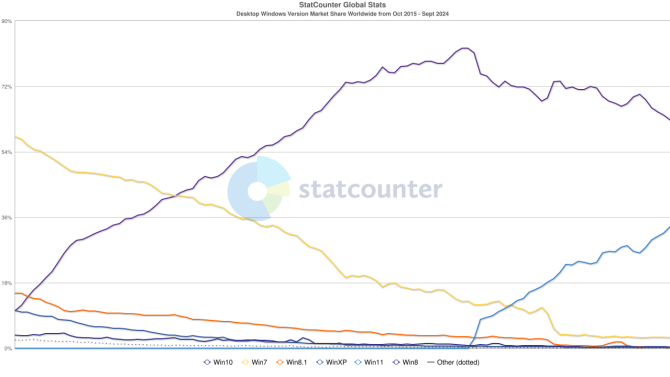Windows 10: With 1 year to go, most businesses have no exit plan
- Howard Rabb
- Oct 18, 2024
- 3 min read

Countdown to the End: Why Your Business Needs a Windows 10 Exit Plan
As of a few days ago, we are exactly one year away from a critical deadline that every business should have on its radar: October 14, 2025. That’s the date when Microsoft will officially end free security updates and technical support for Windows 10. A decade of support for the operating system might seem generous, but the overwhelming popularity of Windows 10 means many businesses are still running it today—and I know for a fact that most of you do not have a plan in place for what comes next. I know this, because every time I bring it up, people shrug.
A year might seem like plenty of time to make a decision, but time moves quickly in the world of IT, and the costs of waiting could be severe. Businesses that fail to prepare for this transition risk exposing themselves to security vulnerabilities, compliance issues, and operational disruptions. This is why your business cannot afford to delay planning your exit from Windows 10.
The End of Support: What Does It Mean?
When Microsoft officially stops supporting Windows 10, it will stop releasing critical security patches, feature updates, and technical fixes. While your PCs running Windows 10 will continue to function, the lack of updates will leave them exposed to viruses, malware, and other cyber threats. As cyberattacks grow more sophisticated, unsupported systems become prime targets for hackers, posing a significant risk to any business.
What’s more, third-party software and hardware vendors will begin to phase out support for Windows 10 soon after its end-of-life. Without continued updates, essential business applications like browsers, security software, and cloud services may stop functioning properly, leaving businesses scrambling to find workarounds.
The Challenge of Windows 11 Adoption
One of the key challenges businesses face is that upgrading to Windows 11 isn’t as straightforward as previous transitions. While Windows 11 offers enhanced security and features, many older machines don’t meet the strict hardware requirements necessary for the upgrade. PCs must have a compatible CPU and TPM 2.0 security chip to run Windows 11, which means many devices purchased before 2018 may be excluded from the upgrade path without costly workarounds.
According to recent data, nearly two-thirds of Windows users are still on Windows 10, while Windows 11 adoption lags behind at just over 30%. Many businesses are hesitant to make the switch due to these hardware limitations, and the normal cycle of hardware replacement has not driven Windows 11 adoption as quickly as expected. However, continuing to rely on Windows 10 beyond 2025 could have costly consequences.
What Should Your Business Do?
To avoid disruptions and stay secure, businesses need to create a plan now to move away from Windows 10 before the deadline. You have several options:
Upgrade to Windows 11: For businesses with newer hardware, upgrading to Windows 11 is the simplest and most cost-effective solution. This can be done easily if your hardware meets the requirements, and Windows 11 offers better security features that will help keep your business safe.
Replace Old Hardware: If your PCs cannot run Windows 11, it may be time to invest in new hardware. While this may seem like a costly option, the price of leaving your business exposed to security risks or having unsupported systems far outweighs the expense of upgrading.
Consider Extended Security Updates (ESU): Microsoft will offer a paid Extended Security Updates program for businesses that can’t transition away from Windows 10 in time. However, this is a temporary solution, and the cost increases each year, making it a less attractive long-term option.
Explore Alternative Operating Systems: Some businesses may choose to explore alternatives like Linux or ChromeOS. These options can extend the life of your hardware, but they come with their own learning curves and compatibility considerations.
Act Now, Avoid the Risks Later
The bottom line is that businesses in Hamilton and the surrounding area need to act now to avoid serious risks when Windows 10 reaches the end of its life. Waiting until the last minute will only make the transition more costly and chaotic. At 256 Solutions, we specialize in helping local businesses like yours navigate critical IT updates and ensure a smooth transition to modern, secure platforms. Start by assessing your current hardware and identifying which systems can be upgraded or replaced. Our team is here to support you every step of the way, ensuring your business remains protected against the ever-evolving cyber threat landscape. Contact us today to start planning your upgrade.
The clock is ticking, and October 14, 2025, will be here before you know it. Make sure your Hamilton business is ready with the help of 256 Solutions.




Comments